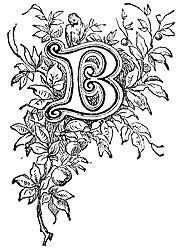 |

ISHAM ABBEY, one of the most interesting houses in Berks, is one mile from Great Marlow, in Bucks.
In this ancient dwelling the Princess Elizabeth lived for nearly three years, committed by Queen Mary to the care of Sir Thomas Hobby and his sisters. Her residence here does not seem to have been an unpleasant one. A bow window was made for her at her wish, and a dais constructed sixteen inches above the floor, so she was evidently treated with the respect due to her royal rank; and when she became Queen, and Sir Thomas Hobby first paid his homage to her, she said to him, "If I had a prisoner whom I wanted to be most carefully watched, I should entrust him to your charge. If I had a prisoner that I wished to be most tenderly treated, I should entrust him to your care."
"The scenery of this beautiful spot is well known from the pictures of De Wint and other water-colour artists, who have portrayed the broad sweep of the transparent river, the gigantic trees, the church, and the abbey, with its mossy roof, projecting oriels, and tall tower, in every effect of cloud or sunshine."
Of the building as it at present stands, the octagonal tower, the hall, and the pointed doorway are part. of the original foundation in the time of Stephen. The rest of the building - a fine specimen of the Tudor style - was built by the Hobbys. The hall, which was beautifully restored in 1859, has at one end a fine ancient lancet window of three lights, and at the other a dark oak gallery. Here is a picture of the Lady Hobby, whose ghost is said to haunt the Abbey. She has in her portrait a very white face, and is in widow's mourning of that period - a not attractive picture nor face, and a still less attractive original. In one of the bedrooms she is still - the tale goes - seen, a self-supporting visionary basin moving before her, in which she is constantly trying to wash her hands. The legend is that this cruel woman beat her little son to death because he could not write without blotting his copy-book! It is a rather remarkable fact that about forty or fifty years ago, in altering a window shutter in the room said to have been the scene of the murder, a quantity of children's copybooks of the time of Elizabeth were found, pushed into the rubble between the joists of the floor, and that one of these was a copybook that answered exactly to the legend, for it was covered with blots, as if the child could not write a word without making one: a poor little nervous fellow, probably, writing in deadly fear of the woman whose furious temper could overcome even a mother's love, and whose hand stained his copy-books with his blood.
Behind the tapestry in one of the bed rooms a secret room was also discovered, the chimney of which was artfully united to that of the hall, so that the smoke of both mingled and the secret chimney was not suspected.
There is also a still older tradition attached to the Abbey.
It is that Montacute, Earl of Salisbury, who had founded the Abbey, came hither to offer his last prayers before he started for the Holy Land. His daughter, then residing as Abbess in a convent at Marlow, came to Bisham to meet him, bringing her nuns with her. Now one of Lord Salisbury's esquires was deeply in love with the lady, and she fully returned his affection. They eloped together, and escaped in a boat to Marlow, but were there taken. The nun was returned to her convent (to be saved, we hope, from the fate of Marmion's Constance by the power and protection of her father); the youth was imprisoned in the Tower. He made a desperate attempt to escape, by tearing his clothes into strips and making a rope with them, by which he endeavoured to descend. But the rope broke; he fell and was dreadfully injured, but was taken into the Abbey, where he finally became a monk.
Thus, much sorrow as well as crime has visited this most lovely spot, where all should be sweet and tranquil as the scene.

|
 |